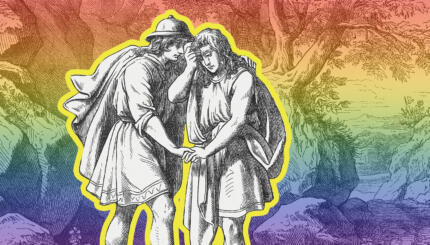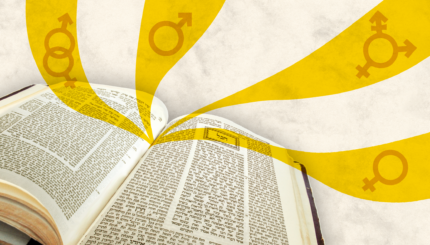My daughter is thrilled to start wearing a uniform next year, and frankly, I share her enthusiasm. At her Bais Yaakov elementary school, girls are required to wear a uniform starting in kindergarten. For my daughter, wearing a uniform will give her a sense of belonging. It will mean that she too is one of the big girls, a real Bais Yaakov girl. For me, it will mean no more fights over wearing tutus to school in the winter.
Uniforms and dress codes are a near universal practice in Bais Yaakov schools, and many other Jewish day schools as well. They are commonly found in prep schools and a growing number of public schools. There are three main reasons schools adopt policies legislating students’ dress.
- Uniforms create a sense of unity amongst students and build a feeling of belonging to a common community. You might not know every student who goes to your school, but you would recognize a fellow student in uniform anywhere. Anyone walking around Manhattan and seeing kids in their colored blazers and ties can sense how uniforms have the potential to convey a collective status symbol.
- Uniforms help equalize students and quell competition. Uniforms remove the pressure from students and their parents to spend copious amounts of money staying on top of the latest trends. They further help prevent teasing over clothing that can cause student alienation and damage the cohesiveness of the school community.
- Uniforms and dress codes are a way for school leaders to exhibit social and cultural control. School leaders who prohibit certain clothing are declaring particular types of clothing, and any associated behaviors, as inappropriate. Schools that require jackets and ties are making a statement about normative dress and acceptable behavior. Schools that forbid students from wearing gang colors are declaring violent behavior socially inappropriate. Uniforms also help the school to recognize its students so as to better identify them on the street and monitor their behavior. For example, anyone can identify a student who left campus during school hours if he or she is wearing the uniform.
These reasons manifest themselves in a particular way in Jewish day schools. Jewish schools are a fundamental building block of the Jewish community. School leaders seek to instill in students a sense of Jewish identity, belonging and connection to a specific Jewish community. Uniforms help foster these feelings and connections.
Young men learning in right-wing yeshivas, institutions of higher Jewish learning, wear white shirts and black pants. This dress code serves to distinguish them; to indicate status and belonging to a group. The same is true of Bais Yaakov uniforms. With their long skirts and button-down blouses, these girls are easily recognizable as Bais Yaakov students. This assists students in recognizing their classmates and the students of other Bais Yaakov schools. Uniforms have been imposed for what education researcher Ines Dussel called, “a symbol of distinction, of social inclusion in a different class of people.” For Bais Yaakov school leaders who want to distinguish their students from secular American girls, uniforms serve that purpose.
The Jewish community is also economically diverse and historically committed to providing universal Jewish education, regardless of whether parents can afford to pay for it. Therefore, any Jewish day school is going to have wealthy and poor students — those who can afford designer clothing and those who cannot. School leaders are sensitive to that reality and want to prevent competition and the potential for students to feel alienated as a result.
Finally, uniforms and dress codes are a socialization tool. School leaders, particularly in Orthodox schools, use them to teach Jewish law and social norms, most notably the traditional laws of tzniut, modesty. Orthodox rabbinic and school leaders have explicitly stated that observing the laws of modesty is a safeguard against a perceived growing sexual permissiveness in American society. Via uniforms and dress codes, school leaders instruct students on the clothing and behaviors that are expected and forbidden in their community.
This is a valid form of education. The Talmud states (Pesachim 50b), “Mitoch she’lo lishma, ba lishma, a person who does the correct action for the wrong reason, will come to do the correct action for the right reason.” It certainly worked in my case. I stopped wearing pants in public when I started attending a Bais Yaakov high school. I did so to comply with the rules, not because of any religious motivation. However, at some point during the four years, and I couldn’t tell you exactly when, I no longer felt comfortable wearing pants. I actively chose to belong to a community in which women wore skirts exclusively. This practice, initially forced upon me, became a legitimate religious belief. While this method of education has been criticized with regards to the heated topic of dress code, it is indeed a practice that happens in schools daily. For example, schools regularly mandate community service hours in the hopes that students will adopt the value of social responsibility.
However, uniforms and dress codes have an educational downside as well. An administrator at a very strict Bais Yaakov high school in Brooklyn acknowledged to me that because all students dressed in accordance with the school’s standards of modesty, school leaders lost an opportunity to engage with students on the issue of tzniut. By imposing religious observance on school premises through the uniforms, the school forfeited an opportunity to educate students on the reasons for and ideology behind dressing modestly.
Whether in Jewish or secular schools, dress codes tend to have a gendered component. Within the Orthodox Jewish world, dress code policies are tightly intertwined with the laws of modesty, which are generally directed toward women. Similarly, dress codes issued by public schools, although seemingly directed towards both boys and girls, generally only focus on girls’ dress. For example, a California junior high school in 1982 restricted students from wearing tube tops, bikini tops and short skirts. More recently, new rules have targeted boys’ dress, such as 1990s dress codes which sought to prevent the gang related clothing typically worn by males.
In both the Jewish and secular worlds, dress codes and uniforms remain a source of controversy and debate. School communities continue to discuss the merits, rationales and best ways of implementing these policies. Are dress codes and uniforms a restriction or a way to build community? Education or coercion?
My daughter doesn’t see the controversy or the politics. She doesn’t anticipate the annoyance I felt as a high school student, with the scratchy maroon sweater and pleated skirt I wore. She feels the excitement of being like all of the big girls in her carpool and I will not quell my daughter’s enthusiasm. I will embrace the convenience, the financial savings, and the policies of the school that I chose. And when she dons her uniform for the first time, I will proudly take pictures of my little big Bais Yaakov girl.
Talmud
Pronounced: TALL-mud, Origin: Hebrew, the set of teachings and commentaries on the Torah that form the basis for Jewish law. Comprised of the Mishnah and the Gemara, it contains the opinions of thousands of rabbis from different periods in Jewish history.
Yaakov
Pronounced: YAH-kove or YAH-ah-kove, Origin: Hebrew, Jacob, one of the Torah's three patriarchs.



